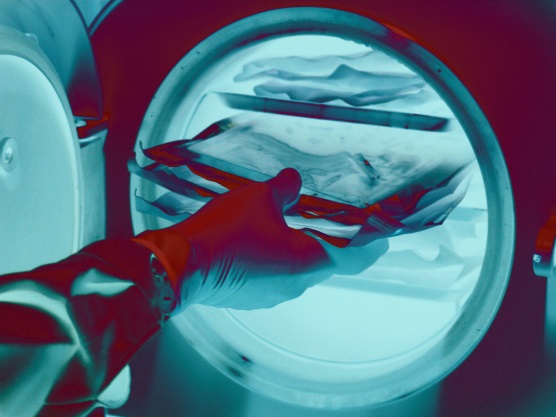The unexpected culprit in steam sterilization
Nele Zgavc, BSI Programme Manager
Published date: |
|
Modified date: |
|
 To stay relevant with Directive 93/42/EEC on medical devices EN 285, Sterilization - Steam sterilizers - Large sterilizers has been updated. To highlight the importance of this revised standard, I wanted to touch on certain concerns within sterilization. Steam sterilization is a delicate process, which can fail for a number of factors. These factors are not necessarily appreciated by all, hence it’s key to continuously train personnel, to make sure medical devices are prepared and presented correctly, and that the correct sterilization process is selected according to the type of load. There are also a number of well-known issues in steam sterilizers and their associated steam supplies, for example wet steam, super-heated steam, inadequate air removal and so on. There is one element that has been long underestimated: Non-condensable gases (NCGs), where steam sterilizers can leave up to 10% of NCG content undetected. These, however, may be detected by biological or chemical indicators. Therefore, NCGs will be my main focus.
To stay relevant with Directive 93/42/EEC on medical devices EN 285, Sterilization - Steam sterilizers - Large sterilizers has been updated. To highlight the importance of this revised standard, I wanted to touch on certain concerns within sterilization. Steam sterilization is a delicate process, which can fail for a number of factors. These factors are not necessarily appreciated by all, hence it’s key to continuously train personnel, to make sure medical devices are prepared and presented correctly, and that the correct sterilization process is selected according to the type of load. There are also a number of well-known issues in steam sterilizers and their associated steam supplies, for example wet steam, super-heated steam, inadequate air removal and so on. There is one element that has been long underestimated: Non-condensable gases (NCGs), where steam sterilizers can leave up to 10% of NCG content undetected. These, however, may be detected by biological or chemical indicators. Therefore, NCGs will be my main focus.
Where do the NCGs creep in?
NCGs can be described as air and other gases, which will not condense under the conditions of steam sterilization. The main danger associated with the presence of NCGs during the come-up phase, is the possibility of air or gas pockets forming within the load. This in turn prevents a transmission of heat energy to the load, generating a barrier for steam penetration. Specifically on porous material, such as a load and its packaging, a small amount can cause unsuccessful sterilization, as steam cannot penetrate to all parts of the load.
NCGs can originate via a number of routes:
- Insufficient removal from the sterilizer chamber before steam entry
- Leaks during the vacuum stage for door seals, valves or screw fittings
- With irregular use, the steam pipes and steam generators become filled with air or NCGs. Before using the sterilizer again, there should be a comprehensive venting procedure and the system should be tested for NCGs
- Non-condensable gases are dissolved in the feed water, which will cause an increase in non-condensable gases in the steam
- Fabric conditioning agents can affect the characteristics of the fabric and can contain volatiles, which can contribute to the NCGs in the sterilizer
Find out how to perform the relevant tests and acceptable values for NCGs. Discover which key methods have been modified in the 2015 version, including requirements on safety, risk control and usability. Ensure your compliance with regulations and avoid unexpected issues by following EN 285:2015, Sterilization - Steam sterilizers - Large sterilizers.
This article was first published by Nele Zgvac on LinkedIn. Click here to read more of Nele's articles.
Click here to provide feedback

